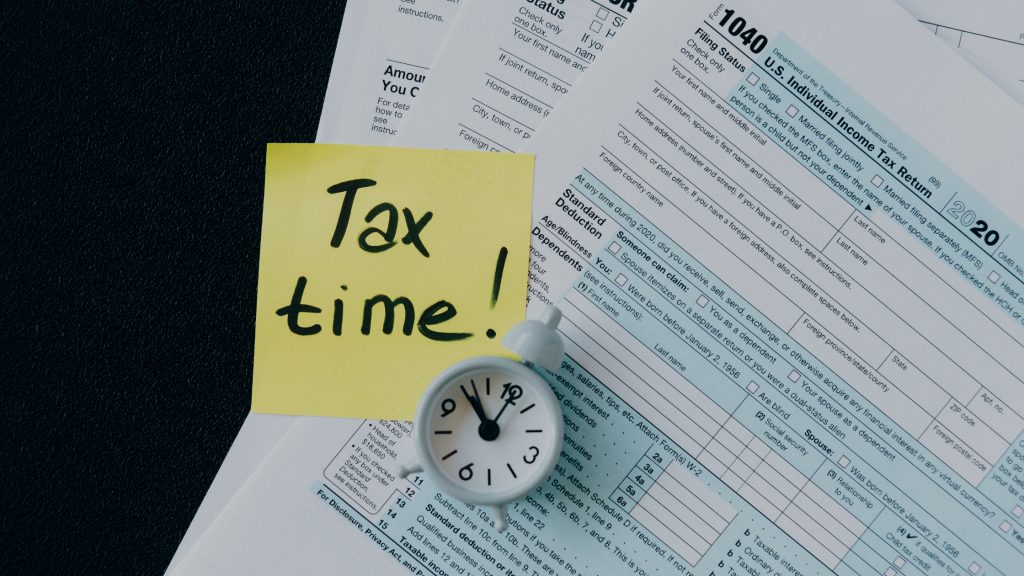Fortnightly Tax Table: Key Insights for Property Investors
When it comes to maximizing cash flow in property investment, understanding the Fortnightly Tax Table is a game changer. This table, used by the Australian Tax Office (ATO), plays a pivotal role in helping property investors align rental income with tax obligations more efficiently. Mastering it can ensure that you’re making the most of your income streams, without unexpected surprises come tax season. Let’s dive into why savvy investors should make this tax tool a part of their strategy.
The Fortnightly Tax Table isn’t just a routine tax guide—it’s a roadmap for financial control. Unlike monthly or yearly tax systems, fortnightly schedules let investors adjust income and tax payments regularly, helping to maintain steady cash flow and prevent the end-of-year financial crunch. This method can be a major advantage for property investors, especially those with multiple rental properties. By following a fortnightly model, you gain more control over your cash inflow, a critical factor for profitable investments.
Choosing the right tax table matters as much as the investment itself. With the Fortnightly Tax Table, property investors can align payments and withholdings to reduce the likelihood of costly tax errors. Every two weeks, the adjustments made in your finances reflect in your rental profits, helping you take advantage of any available deductions in real-time. This means you’re not only keeping better tabs on your money but also minimizing tax stress by spreading out obligations throughout the year.
Many property investors may overlook the significance of timing when it comes to their finances. But with a Fortnightly Tax Table in place, you’re embracing a proactive approach to income and tax management. This setup helps investors stay consistently aligned with tax laws and effectively budget for necessary expenses, from maintenance costs to property upgrades. By integrating the fortnightly approach, you’re setting up your portfolio to yield optimal results while maintaining a stable financial framework.
Incorporating the Fortnightly Tax Table into your strategy can be the edge that sets you apart. It provides a regular, predictable structure that allows for consistent growth and ease in financial planning. As tax time approaches, you’ll be steps ahead, with a clear record of your tax contributions and income flow. For any investor aiming to make a lasting impact in the property market, embracing fortnightly tax management is a choice that promises lasting returns and peace of mind.
Why the Fortnightly Tax Table Matters for Property Cash Flow
The Fortnightly Tax Table can be a powerful tool for property investors looking to optimize their cash flow. By organizing tax payments into manageable, biweekly increments, it helps investors avoid large, unexpected tax bills and maintain a consistent income stream. For property owners juggling multiple rentals, this predictable setup makes it easier to plan for expenses and allocate resources effectively, keeping your portfolio stable and profitable.
Using the Fortnightly Tax Table aligns well with cash flow goals by helping investors smooth out income and tax liabilities. With a fortnightly approach, tax obligations are divided into smaller, frequent payments, which means there’s less pressure at the end of the year. For investors who depend on steady income to cover mortgage payments, maintenance, and property upgrades, this consistency can be a significant advantage.
Timing is everything in property investment, and the Fortnightly Tax Table gives investors better control over their financial calendar. This method matches income collection with tax requirements, meaning property owners are never caught off guard by a sudden tax obligation. Instead, they can align their income and tax contributions in a way that optimizes cash flow and supports strategic financial planning.
When it comes to tax efficiency, the Fortnightly Tax Table offers property investors an edge by helping them track income and tax deductions regularly. With consistent, biweekly updates, investors can more easily monitor and claim deductions in real time, minimizing tax liabilities throughout the year. This hands-on approach can lead to better budgeting and significant savings, adding value to any property portfolio.
For those looking to future-proof their investments, the Fortnightly Tax Table is an ideal choice. It provides a structure that allows for seamless financial management, even as rental properties increase, or market conditions fluctuate. By adopting a fortnightly tax strategy, property investors can secure a reliable, predictable income flow, ultimately strengthening their position in the property market and maximizing their long-term returns.
Comparing Fortnightly and Weekly Tax Tables for Optimal Returns
For property investors, deciding between a Fortnightly Tax Table and a Weekly Tax Table is key to optimizing returns. The fortnightly option offers a structured payment rhythm that aligns well with rental income, helping investors avoid the frequent budgeting adjustments that come with weekly taxes. This makes it ideal for those who prioritize steady cash flow without weekly disruptions.
The Weekly Tax Table, however, may suit those looking for ultra-precise income management. With more frequent tax payments, investors gain tighter control over cash flow but must also stay on top of the constant deductions. While this approach offers precision, it can add complexity for those managing multiple income sources or property portfolios.
In contrast, the Fortnightly Tax Table provides a “sweet spot” between simplicity and control. By matching biweekly deductions with regular rental payments, investors enjoy a predictable schedule that supports consistent cash flow. This structure often makes the fortnightly table the preferred choice for those wanting ease and financial stability.
The administrative burden is also lighter with the Fortnightly Tax Table. While weekly payments require constant monitoring, fortnightly payments allow for smoother financial planning, freeing investors to focus on property management and growth. This simplicity is a significant benefit for busy investors balancing various financial demands.
Ultimately, the choice between the Fortnightly Tax Table and the Weekly Tax Table depends on each investor’s cash flow goals and preference for control. Fortnightly tables often offer an optimal balance, keeping tax management straightforward while still allowing flexibility to adjust as needed.
How to Use the Fortnightly Tax Table to Maximize Rental Income
Choosing the best tax table is crucial for property investors focused on steady returns. The Fortnightly Tax Table offers a structured approach with biweekly deductions that align well with most rental schedules, keeping cash flow balanced and predictable. This schedule is often favored for its simplicity, allowing investors to manage finances without constant tax adjustments.
The Fortnightly Tax Table provides a buffer against financial strain by spreading tax contributions over two-week intervals, creating a manageable rhythm. For investors juggling multiple properties, this balance helps in budgeting and allows for better allocation of resources toward property improvements or other expenses. It’s a hands-off option that supports cash flow stability without extra admin work.
In contrast, the Weekly tax table is ideal for investors who want meticulous control over their finances. Weekly deductions can help keep close tabs on cash flow, but they require a higher level of maintenance and frequent budget adjustments. This method is best suited for investors who prefer detailed financial oversight and are comfortable with weekly calculations.
One of the biggest advantages of the Fortnightly Tax Table is the lower administrative demand. Weekly deductions can be taxing for those managing a large portfolio, as they require ongoing adjustments to keep everything balanced. Fortnightly payments, however, simplify the process, freeing up time for investors to focus on growth and property management.
Deciding between the Fortnightly Tax Table and the Weekly tax table ultimately comes down to personal investment style. Fortnightly schedules are optimal for predictable, hassle-free management, while weekly tables work well for hands-on investors who prioritize exact control. Understanding which approach best fits your financial goals can lead to optimized returns and smoother cash flow management.
Common Tax Pitfalls in Fortnightly Income Reporting for Investors
One of the most common pitfalls in Fortnightly Tax Table reporting is misaligning tax deductions with actual rental income. If your rental income doesn’t precisely match the fortnightly tax cycle, it can lead to discrepancies that impact your end-of-year tax liability. Ensuring alignment can help maintain an accurate, consistent cash flow.
Investors often overlook deductions they’re eligible for on a fortnightly basis, such as property maintenance or management fees. Missing these deductions can result in paying more tax than necessary. Regularly reviewing eligible deductions specific to fortnightly reporting can help keep your cash flow optimized and reduce tax obligations.
Another common issue is miscalculating income from multiple properties in the Fortnightly Tax Table. Combining income inaccurately across properties can lead to over or underestimations of taxes owed. For multi-property owners, it’s essential to account for each property separately to avoid potential tax reporting errors.
Incorrectly timing tax payments is another frequent challenge. The Fortnightly Tax Table requires timely contributions, and even a slight delay can disrupt cash flow and result in late fees. Setting reminders for tax payment deadlines can prevent unnecessary penalties and ensure a smoother financial process.
Finally, failing to adjust the Fortnightly Tax Table when rental income changes is a significant oversight. If rental prices shift due to market changes, updating your tax table can prevent misreported income and surprise tax bills. Staying proactive about these adjustments helps maintain an accurate tax profile and maximizes your investment returns.
Tips for Leveraging Fortnightly Tax Calculations in Property Investment
Using the Fortnightly Tax Table effectively can boost your property investment strategy. One tip is to align fortnightly tax payments with your rental income cycle, helping you maintain a balanced cash flow and avoid surprises at tax time. For insights on improving cash flow, explore our mortgage repayment calculator.
Maximize deductions by consistently recording expenses, like repairs or management fees, on a fortnightly basis. This approach keeps you organized and ready for tax season. To avoid common errors, check out our guide on tax deduction mistakes.
When investing in new areas, like South Yarra or Perth, using fortnightly tax tracking can make budgeting easier and support a growth-focused strategy. Align your tax approach with your investment goals for best results.
Consider leveraging landlord insurance to protect your cash flow against unexpected expenses, which can complicate fortnightly tax management. This added layer of security keeps your finances steady and your taxes predictable.
Finally, stay updated on market trends and tax comparisons, like our Weekly vs. Fortnightly Tax Table guide. This insight can help you decide the best tax schedule for your specific investment strategy, maximizing returns year-round.
Disclaimer: The information provided here is general in nature and should not be considered as professional tax advice. For specific tax guidance, please consult a qualified tax professional or visit the ATO website.








